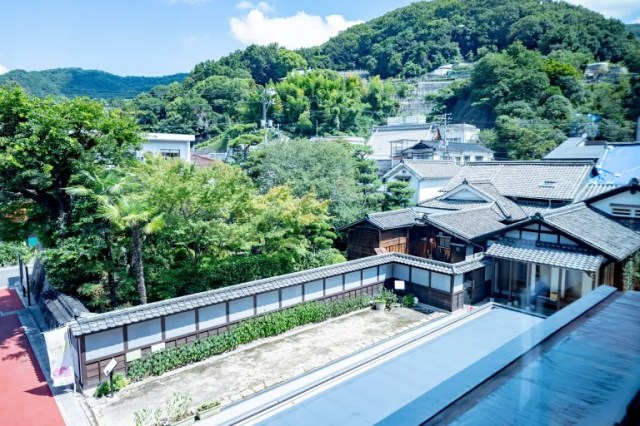
Small details tell some big stories.
Today, we’re headed to the Chiba samurai residence. If you know much about Japanese geography, you might think that means we’re going east from Tokyo to the capital’s neighbor, Chiba Prefecture. Actually, though, we’re going west, almost all the way to the opposite side of Japan’s main island of Honshu, to Hiroshima Prefecture.
▼ The Chiba family crest
The Chiba Family Residence (technically the Former Chiba Family Residence, since they don’t live there anymore) is located in Kaita, a town on the east side of Hiroshima Bay. Back in the days of the shogunate, Kaita was a flourishing settlement on one of the region’s post roads, and the Chiba were one of its most prominent families. The tatami-floor building of their beautiful hillside estate was most recently reconstructed in 1774, and its architecture has been preserved through to the present day.
It’s been decades since the Chiba family lived here, and the house is now a historical site and free museum that’s open to the general public to visit. The gardens are beautiful, and stepping inside the building feels like stepping back in time. On display are artifacts such as stately samurai helmets, exquisitely illustrated wall scrolls, and pieces of fine ceramic and lacquerware.
▼ Plus some adorable rabbit-themed latticework above the window here
Following the end of Japan’s Sengoku civil war period, the Chiba family made its peacetime living by producing and selling sake under the brand Jinboya.
However, that doesn’t mean life was all easy for the family, and one example of that can be found in the house’s bathroom.
▼ A bathroom which predates Japan’s high-tech washlet toilets
The first thing that we noticed was that the bathroom had tatami reed flooring, which we imagine must have been a serious pain to scrub clean if someone had poor aim while dropping a deuce into the hole in the center of the floor. But the even more startling feature is up on the wall…
…where there’s a rack to hold a katana, because apparently even while taking a poop, the family felt the need to stay diligent against possible attacks by assassins.
▼ The rack is even situated so that the weapon can be quickly drawn with the right hand without having to rotate the scabbard or blade in order to have the sword in a proper fighting grip.
There’s one more sign of how it wasn’t always easy being a samurai back out in the garden, where there’s a shrine.
Remember how we said the name of the family that lived here, Chiba, is also the name of a prefecture on the other side of Japan? That’s not a coincidence. The Chiba family originally did hail from Chiba Prefecture. The family aligned itself with the Mori samurai clan, whose power base was in what’s now Hiroshima Prefecture. At the Battle of Sekigahara in 1600, the decisive clash that brought an end to the Sengoku period that took place in central Japan, both the Chiba and the Mori fought on the side of the Western Army. With the Western Army’s defeat, the surviving members of the Chiba family, cut off from their homelands, fell back to the formerly Mori-controlled lands of Hiroshima Prefecture, where they remained and began new lives.
Originally, “Chiba” wasn’t even the family’s official family name. Family names themselves were reserved for the nobility, which the family no longer was following their defeat at Sekigahara. Eventually, though, within the community they became referred to as the family that had come from Chiba. In 1870, when the reforms of the Meiji Restoration required even commoners to register a family name, the family chose “Chiba.”
And that shrine in the garden? It faces east, in the direction of Chiba Prefecture, so that the family wouldn7t forget where it came from.
Location information
Former Chiba Family Residence / 旧千葉家住宅
Address: Hiroshima-ken, Aki-gun, Kaita-cho, Nakamise 8-31
広島県安芸郡海田町中店8−31
Open 10 a.m.-4 p.m.
Admission free
Website
Photos © SoraNews24
● Want to hear about SoraNews24’s latest articles as soon as they’re published? Follow us on Facebook and Twitter!


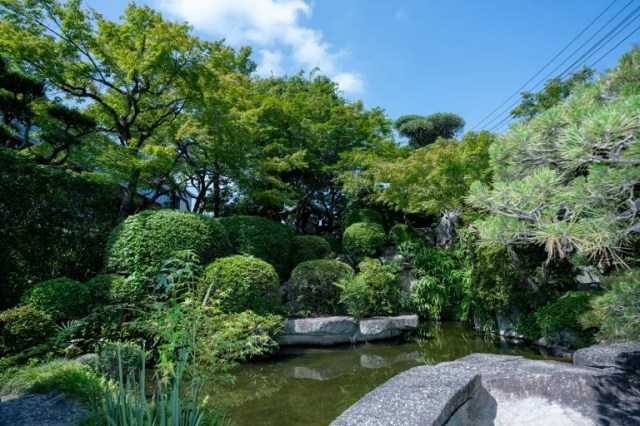
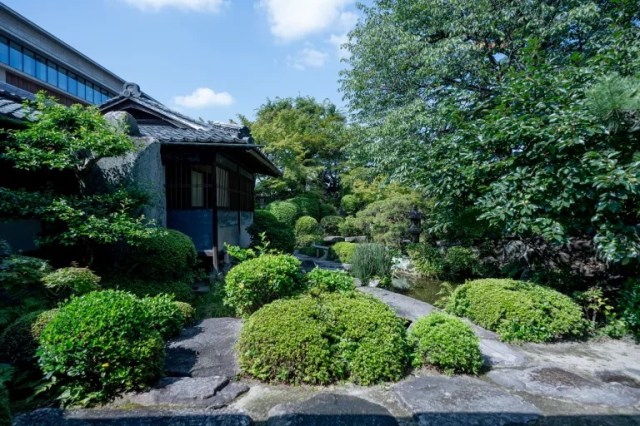
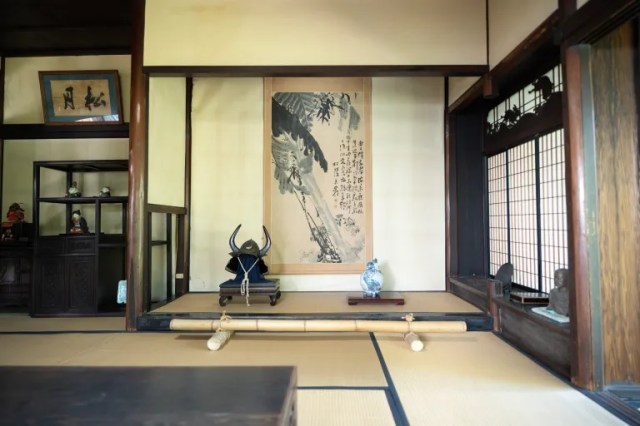
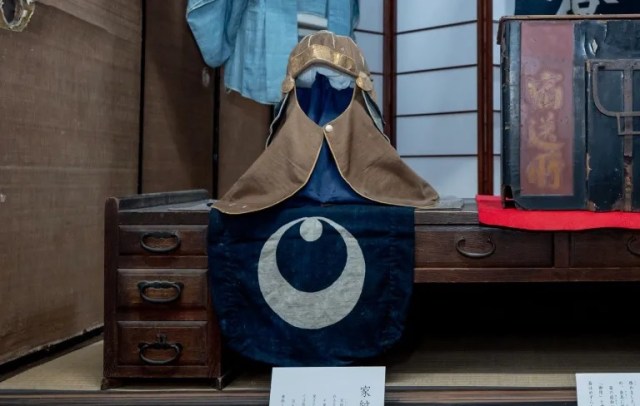

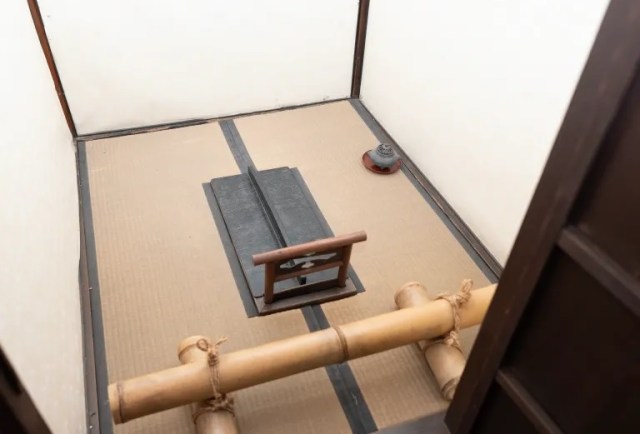
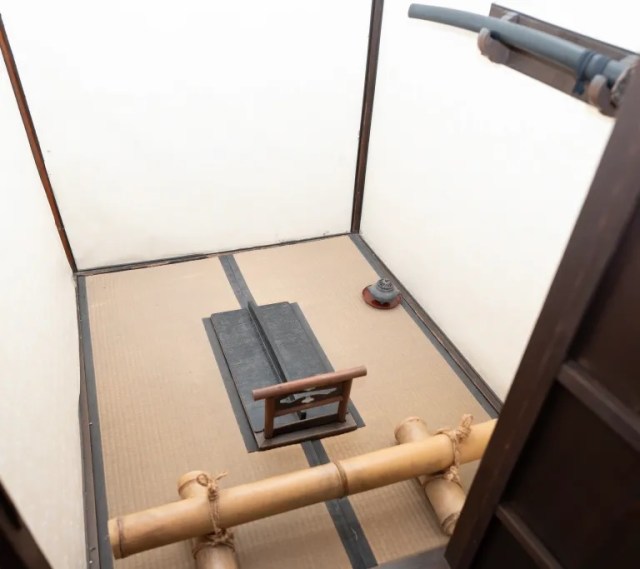
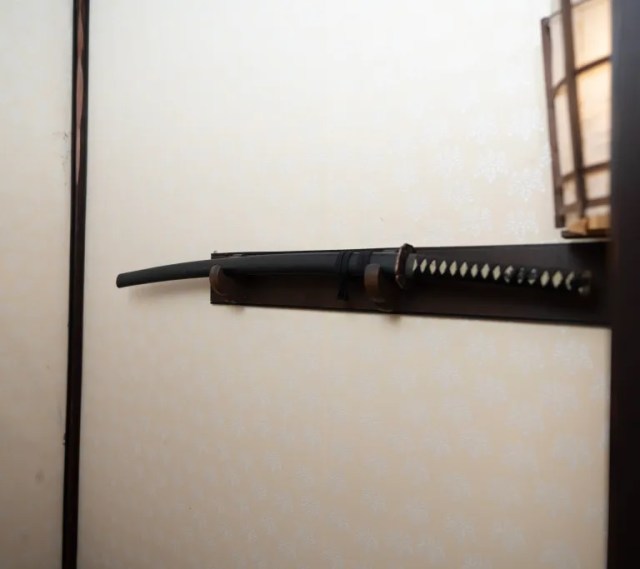
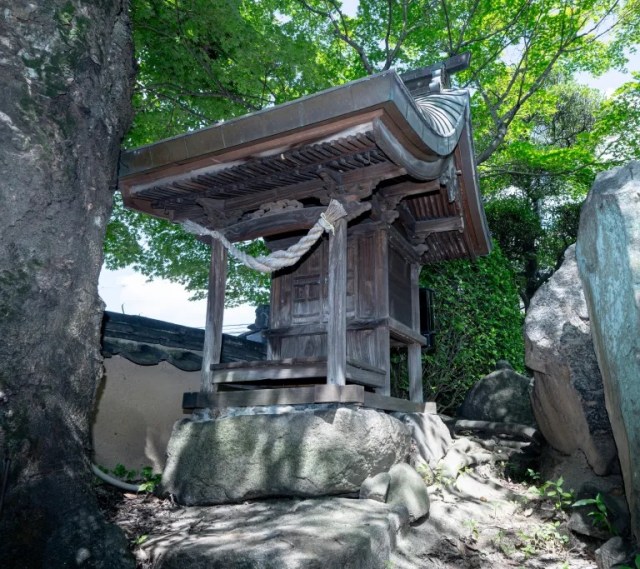
 Stay at an old samurai residence in the heart of a “Little Kyoto” warrior town
Stay at an old samurai residence in the heart of a “Little Kyoto” warrior town There’s a samurai-era village for you to walk through at this awesome overlooked museum in Japan
There’s a samurai-era village for you to walk through at this awesome overlooked museum in Japan Samurai luxury — Renovated 400-year-old ryokan near Chiba’s coast can be yours to rent【Photos】
Samurai luxury — Renovated 400-year-old ryokan near Chiba’s coast can be yours to rent【Photos】 Rent an entire folk house in Japan, surrounded by nature just outside Tokyo
Rent an entire folk house in Japan, surrounded by nature just outside Tokyo You could be renting this 300-year-old samurai era house in Japan right now
You could be renting this 300-year-old samurai era house in Japan right now Private booths are coming to Japan’s Shinkansen bullet trains even sooner than we’d thought【Video】
Private booths are coming to Japan’s Shinkansen bullet trains even sooner than we’d thought【Video】 Rakuten randomly offers 58 New Year’s osechi feasts in Japan, but did we get a star or a dud?
Rakuten randomly offers 58 New Year’s osechi feasts in Japan, but did we get a star or a dud? Top Japanese cosplayer Enako returns to Comiket after 6 years, creates mayhem with admirers
Top Japanese cosplayer Enako returns to Comiket after 6 years, creates mayhem with admirers The Purple Lucky Bag from Village Vanguard is an extra-large waste of money
The Purple Lucky Bag from Village Vanguard is an extra-large waste of money A surprising number of Japanese youth get most of their income from their parents
A surprising number of Japanese youth get most of their income from their parents Young Japanese adults show lowest dating experience level yet in annual survey
Young Japanese adults show lowest dating experience level yet in annual survey The top 70 words that keep showing up in Japanese light novel titles (and yes, isekai is one of them)
The top 70 words that keep showing up in Japanese light novel titles (and yes, isekai is one of them) How to do an overnight bus trip to Hirosaki from Tokyo – Part 1【Photos】
How to do an overnight bus trip to Hirosaki from Tokyo – Part 1【Photos】 Stamina-destroying “Paralysis Noodles” are Tokyo’s newest over-the-top ramen innovation
Stamina-destroying “Paralysis Noodles” are Tokyo’s newest over-the-top ramen innovation Five things that keep Japanese people chained to their jobs
Five things that keep Japanese people chained to their jobs Starbucks Japan ready to get Year of the Horse started with adorable drinkware and plushies【Pics】
Starbucks Japan ready to get Year of the Horse started with adorable drinkware and plushies【Pics】 Japanese beef bowl chain Sukiya’s 2026 Smile Box lucky bag basically pays for itself
Japanese beef bowl chain Sukiya’s 2026 Smile Box lucky bag basically pays for itself Hayao Miyazaki says Happy New Year to Studio Ghibli fans with new art for Year of the Horse
Hayao Miyazaki says Happy New Year to Studio Ghibli fans with new art for Year of the Horse Cup Noodle tries an authentic Jiro-style ramen, but something’s not quite right
Cup Noodle tries an authentic Jiro-style ramen, but something’s not quite right The best Starbucks Japan Frappuccinos we want to drink again in 2026
The best Starbucks Japan Frappuccinos we want to drink again in 2026 We revisited Sweets Paradise after a decade to see if Japan’s dessert buffet still delivers
We revisited Sweets Paradise after a decade to see if Japan’s dessert buffet still delivers That time Seiji called JASRAC to ask why he didn’t get paid royalties for his song being on TV
That time Seiji called JASRAC to ask why he didn’t get paid royalties for his song being on TV We found possibly the quietest Japanese-style hotel in Tokyo’s bustling Shinjuku district
We found possibly the quietest Japanese-style hotel in Tokyo’s bustling Shinjuku district Pizza Hut Japan’s hot lucky bags are perfect for a New Year’s pizza party
Pizza Hut Japan’s hot lucky bags are perfect for a New Year’s pizza party Japan’s oldest largetooth sawfish in captivity back on display in Mie Prefecture
Japan’s oldest largetooth sawfish in captivity back on display in Mie Prefecture 7-Eleven Japan starts new temporary luggage storage service in over 300 branches
7-Eleven Japan starts new temporary luggage storage service in over 300 branches Disillusionment at Tsukiji’s tourist-target prices led us to a great ramen restaurant in Tokyo
Disillusionment at Tsukiji’s tourist-target prices led us to a great ramen restaurant in Tokyo Starbucks teams up with 166-year-old Kyoto doll maker for Year of the Horse decorations【Photos】
Starbucks teams up with 166-year-old Kyoto doll maker for Year of the Horse decorations【Photos】 Tokyo considering law requiring more trash cans following litter increase in heavily touristed area
Tokyo considering law requiring more trash cans following litter increase in heavily touristed area Tokyo’s Tsukiji sushi neighborhood asks tour groups to stay away for the rest of the month
Tokyo’s Tsukiji sushi neighborhood asks tour groups to stay away for the rest of the month Tokyo event lets you travel back in time, for free, to celebrate 100 years since Showa era start
Tokyo event lets you travel back in time, for free, to celebrate 100 years since Showa era start Japan may add Japanese language proficiency, lifestyle classes to permanent foreign resident requirements
Japan may add Japanese language proficiency, lifestyle classes to permanent foreign resident requirements Sanrio theme park in Japan announces plans to expand into a Sanrio resort
Sanrio theme park in Japan announces plans to expand into a Sanrio resort Survey asks foreign tourists what bothered them in Japan, more than half gave same answer
Survey asks foreign tourists what bothered them in Japan, more than half gave same answer Japan’s human washing machines will go on sale to general public, demos to be held in Tokyo
Japan’s human washing machines will go on sale to general public, demos to be held in Tokyo Japan’s deadliest food claims more victims, but why do people keep eating it for New Year’s?
Japan’s deadliest food claims more victims, but why do people keep eating it for New Year’s? We deeply regret going into this tunnel on our walk in the mountains of Japan
We deeply regret going into this tunnel on our walk in the mountains of Japan Studio Ghibli releases Kodama forest spirits from Princess Mononoke to light up your home
Studio Ghibli releases Kodama forest spirits from Princess Mononoke to light up your home Major Japanese hotel chain says reservations via overseas booking sites may not be valid
Major Japanese hotel chain says reservations via overseas booking sites may not be valid Put sesame oil in your coffee? Japanese maker says it’s the best way to start your day【Taste test】
Put sesame oil in your coffee? Japanese maker says it’s the best way to start your day【Taste test】 No more using real katana for tourism activities, Japan’s National Police Agency says
No more using real katana for tourism activities, Japan’s National Police Agency says Starbucks Japan reveals new sakura drinkware collection, inspired by evening cherry blossoms
Starbucks Japan reveals new sakura drinkware collection, inspired by evening cherry blossoms Updated cherry blossom forecast shows extra-long sakura season for Japan this year
Updated cherry blossom forecast shows extra-long sakura season for Japan this year Kyoto samurai house wants to share its history of seppuku, torture and gold coins with visitors
Kyoto samurai house wants to share its history of seppuku, torture and gold coins with visitors Japan travel: Best things to do, see and eat in Hagi and Yamaguchi City in Yamaguchi Prefecture
Japan travel: Best things to do, see and eat in Hagi and Yamaguchi City in Yamaguchi Prefecture Century-old Hiroshima brewery in one of Japan’s three great sake-brewing spots offers tours in English
Century-old Hiroshima brewery in one of Japan’s three great sake-brewing spots offers tours in English Japan’s smallest Toshogu Shrine: A tiny wonder with a big samurai connection
Japan’s smallest Toshogu Shrine: A tiny wonder with a big samurai connection Samurai manor house-style restaurant collabs with 150-year-old Kyoto matcha merchant for dessert
Samurai manor house-style restaurant collabs with 150-year-old Kyoto matcha merchant for dessert The restaurant where one of Japan’s last samurai lords ate now has a café with really good cake
The restaurant where one of Japan’s last samurai lords ate now has a café with really good cake We travel across the city like royalty — Hiroshima streetcar turns into fancy, private dining area
We travel across the city like royalty — Hiroshima streetcar turns into fancy, private dining area Seven Airbnb rentals that are perfect for couples, families, and friends vacationing in Japan this summer
Seven Airbnb rentals that are perfect for couples, families, and friends vacationing in Japan this summer Kusaki Marino: A Japanese family restaurant where you bow your head and enter like a samurai
Kusaki Marino: A Japanese family restaurant where you bow your head and enter like a samurai Japanese island with a population less than 10 is a hidden gem you won’t find in travel guides
Japanese island with a population less than 10 is a hidden gem you won’t find in travel guides A visit to one of Japan’s motorcycle Shinto shrines
A visit to one of Japan’s motorcycle Shinto shrines Stunning Japanese restaurant is like eating in a samurai residence
Stunning Japanese restaurant is like eating in a samurai residence The number of tourists was declining in this Japanese city, but Ono is now making its comeback
The number of tourists was declining in this Japanese city, but Ono is now making its comeback Japanese bento serves up a slice of the samurai life in a special carry case
Japanese bento serves up a slice of the samurai life in a special carry case “World’s most spacious public toilet” baffles the mind in Japan
“World’s most spacious public toilet” baffles the mind in Japan Japanese mochi tasting flight has roots in samurai dining culture
Japanese mochi tasting flight has roots in samurai dining culture
Leave a Reply